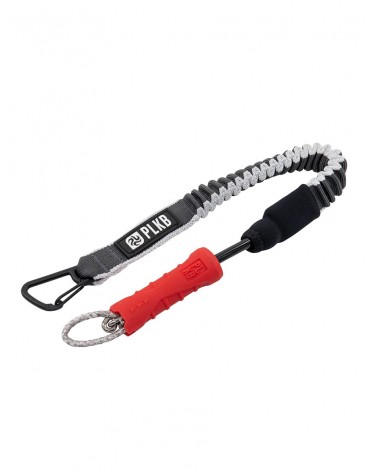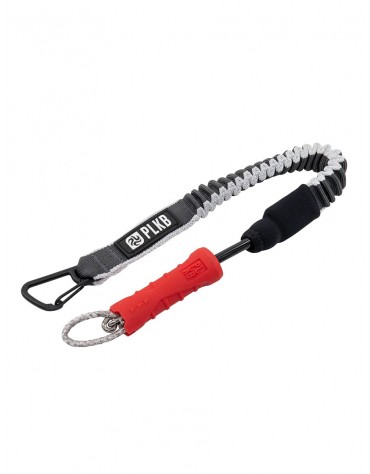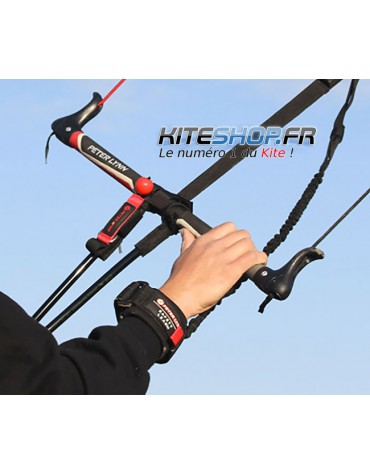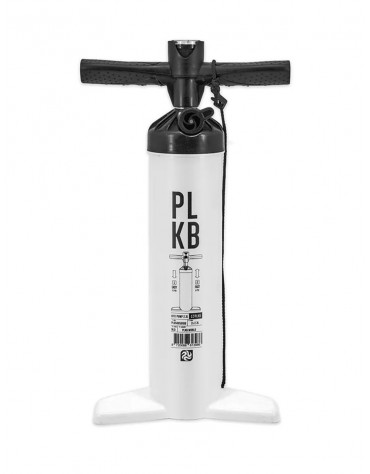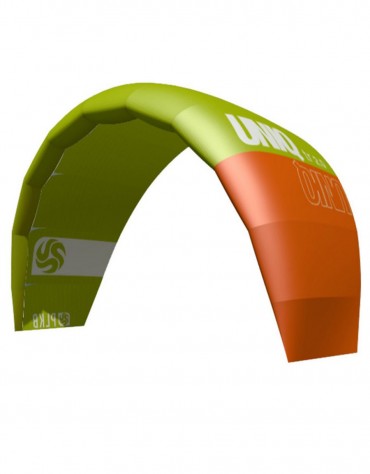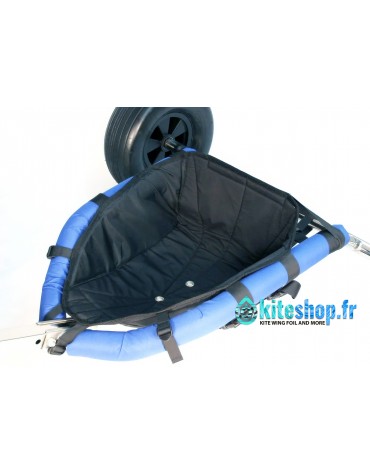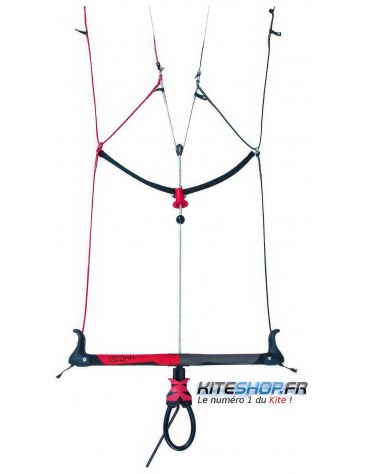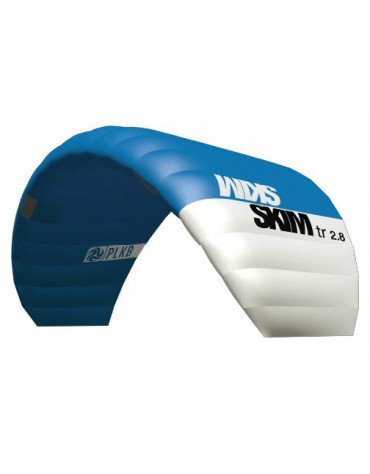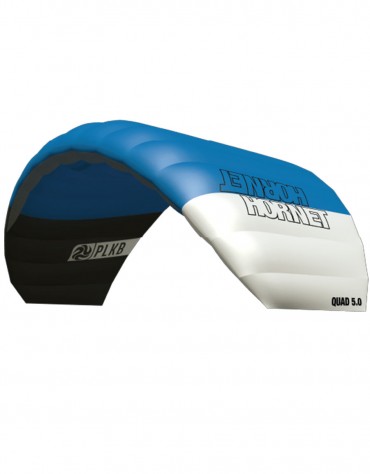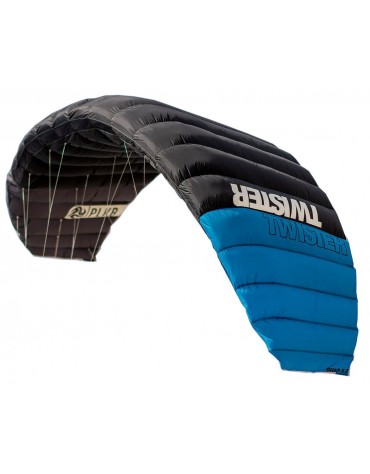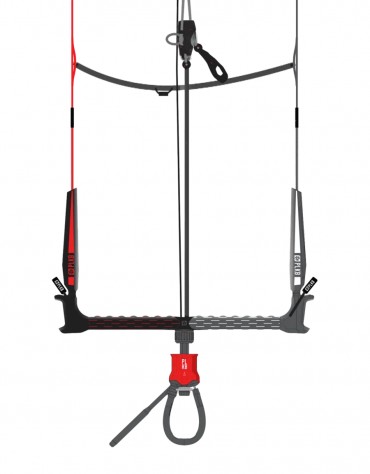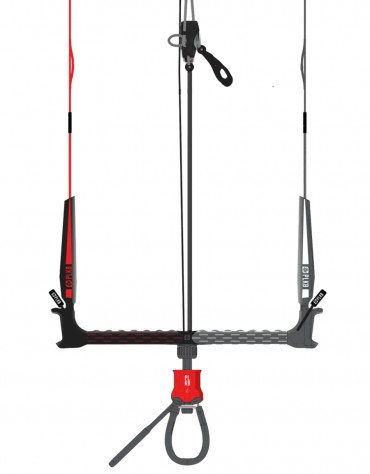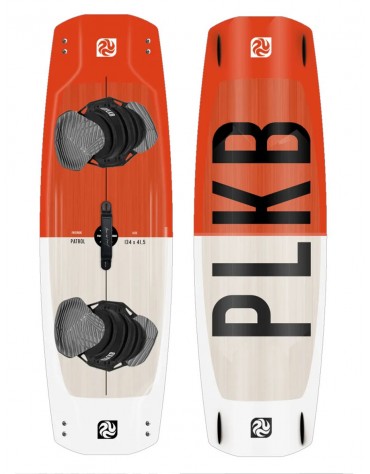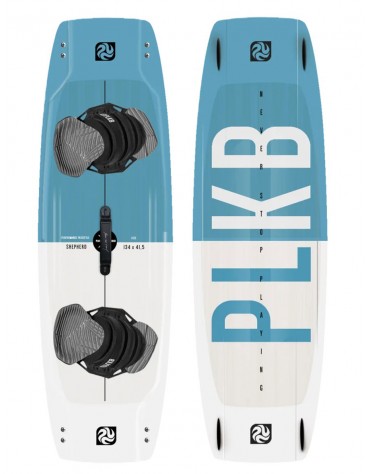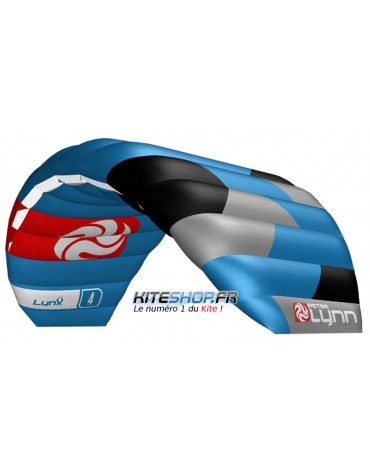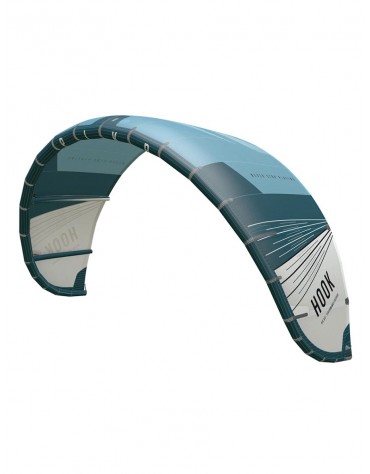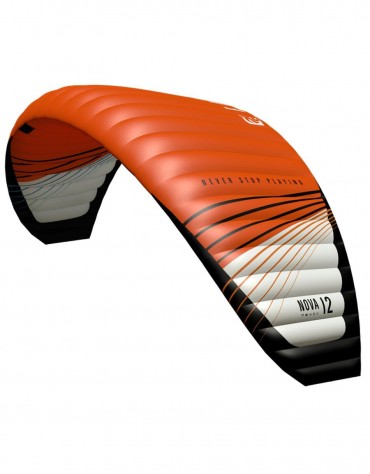Liste de produits par fabricant PETERLYNN
Born in 1946, Peter Lynn started flying kites at a young age. He began his career as an engineer, graduated BE Mech Hons in 1969 and began working full time in the kite field in 1971. He has been a leading innovator and a driving force in international kiting industry ever since. With the sole aim of being on the leading edge of kite design Peter and his team hold credits for an impressive list of “industry firsts”, such as the invention of the kite buggy in 1990, the C-Quad in 1997 and the “Arc” style – or Twinskin type – kites in 1999.
1987 – 1997: The first kite buggiesIn 1990, the invention of the kite buggy showed for the first time that a kite could be a viable means to convert wind energy into motive power. From 1987 Peter and his team committed 100% of their time and energy to the development of traction kiting, with early efforts being towards kite sailing. |
| One of the first wings that carried the Peter Lynn name was the Peel. With a simple design this two line wing offered very good performance as well as stability and great handling. The Peel was launched in 1991 and is now referred to as the grandfather of power foils. Although handicapped by the kites of the time (the best performance back then was obtained with delta style sports kites), within a few months Peter and his team were successfully sailing all courses under kitepower; in winds from 10km/h to – on a celebrated occasion – over 100km/h. By 1988, they were successfully water skiing using kite power, had mastered kite ice skating and had even made various wobbling attempts at kiteboarding. |
| The invention of the modern kitebuggy in 1990 was a spin-off from these other kite traction developments: in order to let kitesailing development continue through the winter, while their favourite lake was frozen over, the wheels were fitted to a 3-hulls kite boat. The result was recognised immediately as a practical buggy – and went into production within months, spawning what is now a worldwide sport with perhaps some tens of thousands enthusiastic practitioners today. Between 1990 and 1997, a series of kite buggies were developed, which got better and better over the years in terms of performance, user comfort and durability. From the classic buggy, development went on to create the Competition buggy; much more refined and still on offer today. At the same time Peter developed a wide range of extensions, upgrades and accessories for all buggies. The last addition to the range was the Folding buggy, which can be disassembled and folded without the use of any tools; ideal for storage and transport. |
1997: C-QuadFrom the early 1990’s, the team at Peter Lynn had recognized that kiteboarding, if it could be made practical, would be the big prize. As they worked away at the problems year after year the big worry was not whether it was going to be possible or not – that had been settled early on – but whether it could ever be made easy enough for more than just a tiny handful of elite athletes in perfect conditions. As they swayed from hope to despair and back many times, it gradually became clear that the solution lay with better kites; not in board development, which had been the main focus in the early years. |  |
| In 1997 the first hybrid kite was born; the C-Quad. The speed and performance of this kite surprised kite flyers worldwide and it quickly became widely used in many kiting disciplines and showed to be perfectly suitable for kite buggying but also for kite sailing and even kiteboarding. The secret of the C-Quad is its excellent blend between two types of kite, combining the single skin of delta type kites with the bridling of a foilkite. With the complete wing being supported by bridles there was no need for the large, heavy rods seen in large delta type kites. The unique C-Quad is still seen today… |
1999 – 2004 The ARC / Twinskin designFor kiteboarding though, even better kites were needed. Bruno Legaignoux’s 1983 invention of the inflated tube sled held initial promise but developed painfully slowly through the ‘80’s and 90’s and was not clearly recognizable as providing a viable option for kiteboarding until the late ‘90’s. At Peter Lynn, the search had been on for a decade but rapid improvements in LEI kites from 1998 on provided a real spur, and pointed towards a development direction that looked promising – the ram air inflated sled. Unfortunately, Arcs are VERY difficult to design – more than one earlier attempt had been abandoned with the conclusion that the concept is just not possible. Then from a fresh start initiated in 1998, the first Arc that could actually fly was built and successfully tested. Not just successfully, early indications were that Arc style kites could eventually become THE best performing kites for kiteboarding. However flashes of amazing performance are not the same as a fully rounded developed design that can be manufactured consistently and perform for all users in all conditions. To get from belief to reality takes tens of thousands of hours of hard slogging work by highly talented designers and users. |
 | The challenge for Peter Lynn was to bridge a 17 year development lag in comparison to LEI’s; would it ever be possible to catch up even if the eventual performance could be superior. Time was the enemy, but right from the start it was obvious that this Arc design, renamed to Twinskin design in 2003, had created a new field of its own, with its stability (there is nothing like it on the market), no bridles to tangle and of course no bladders to puncture. Combined with its great performance and user friendliness this makes the Twinskin design ideal for all levels of riders looking to progress every time they’re out riding. |
| In 1999 the first Arc came on the market. The standard Arc was a great success, many people had noticed that there was a different kite that was a lot more stable and user friendly than the tube kites. The F-Arc was the next follow-up, introduced in 2002. This was a high performance kite with a radical high aspect ratio, showing what could be done with the Twinskin design. The big contrast with other kiteboarding kites out there, was that the F-Arc was such a high aspect ratio kite, but still so stable and forgiving. |
| The tube kite design has been around for many years, and the tube kites design developed very quickly into a kite with a lot of lift and good depower. In 2003 the first Guerilla came on the market. A kite that was a great rival to the tube design, the kite had a lot of depower, quick and easy handling and good lift. Many people started to realize that the Twinskin design was a very good alternative for the tube kite design, and slowly more people started to gain interest in the design.The design developed further when in 2004 the Bomba and Guerilla II were introduced. The Bomba was a great fun kite, good for wakestyle and waveriding. The 2004 kites were a lot more direct in steering, and again a big step forward from the 2003 design. The Guerilla II featured a lot more lift and direct steering than the 2003 Guerilla.Halfway through the year 2004 Peter Lynn came with the new Phantom design. Again a high aspect ratio kite, some even called it the F-Arc 2. However, it was nothing like it! The Phantom had great lift, but also a very quick & direct steering and a huge amount of depower. The kite is targeted mainly for land use, due to its incredibly forgiving behavior, but was also used by many riders on the water. The Twinskin design was very close to the tube design in performance, although always keeping the stable and forgiving Twinskin behavior. It was quite surprising that the Twinskin design had developed so fast during the years. Where the tube kite development had been running for many more years, by all the various kiteboarding brands out there today, the Twinskin design had gotten so close in only a few years time, despite Peter Lynn being the only company with this type of kite. |
2005-2011: Focus on foil kitesOver the years the designers at Vliegerop/Peter Lynn Kitesports in the Netherlands became key to the development of the Peter Lynn product range. The Twinskins were experiencing a significant break-through with the Synergy and the range of foils was being broadened. In 2005 the Peter Lynn Pepper took the market for “beginner” foils by surprise and quickly established itself as the kite of choice for kite enthusiasts looking to get into traction kiting. The Pepper was easy to use, offered confidence inspiring stability and a lot of power at a very affordable price. |  |
| After this great success Peter Lynn started to develop a wide range of products for beginners and intermediate users who want to easily advance in their favorite sport. The Access range was born. Consisting of the Hornet, the Twister and the Viper the access range covered all directions of traction kiting. Each of these kites was designed for a specific purpose: maximum stability, huge lift for freestyle and controllable speed for buggying. |
| In 2006 the first “pro level” kite was released, the Reactor. This excellent kite was aimed at buggy cruising and therefore very fast while remaining very stable and tolerant. This was the first kite designed according to the criteria of the most demanding riders; thus the Peter Lynn Pro range was born. Everything about the Pro Range was a step up; the materials used, specialized construction techniques, finishing and performance. Peter Lynn had again raised the bar by setting new standards in both performance and quality in kite design.In 2009 the Pro range was first extended with the Core, a highly versatile kite which was the result of the very best technological developments by the Dutch designers. The Core offered performance unseen in foilkite design. Designed as an all rounder it was so efficient that it could easily be flown one size smaller and still offer the same power as its competition. 2009 proved to be a milestone year in the Peter Lynn history, with the introduction of the Vapor at the European kitebuggy Championships leaving nothing to the imagination. With the top 5 being Vapor pilots and a total of 7 Vapors in the top 10 Peter Lynn firmly cemented itself as the leading brand in high performance foilkite design. In the following years the Vapor continued to dominate the international buggy racing scene with numerous National titles, several European and World championship titles and setting the current worldwide kite buggy speed record of 134Km/h. |
 | 2012-2014: One brand, all disciplines2011 marked a special year for Peter Lynn. With the release of two dedicated kiteboarding kites at the end of 2011, Peter Lynn entered the LEI market. The Escape and Fury were the result of several years of development and showed the kiting industry that 40 years of experience really means something. Both the Escape and Fury were quickly recognized by kiteboarders worldwide as serious competitors in terms of build quality and flying characteristics. |
| By the end of 2012 the second generation of Escape and Fury was introduced, with both kites being further refined and tuned to suit the respective target riders even better; and they received a graphic overhaul as well. Furthermore, the LEI range was extended with the Fury Lite, dedicated to light wind and course racing. |
| Early 2014 another LEI has been released: the Swell. This kite was designed for wave and wakestyle and has been reviewed by international magazines as nothing short of stellar. In 2012 also the first depower foil with bridles was introduced in the Peter Lynn range; the Lynx. Suited for all skill levels, the Lynx is a perfect all-round cruising kite. In 2014 the range of bridled depower foil kites was extended and now includes the Leopard; a high performance, freestyle kite for advanced riders. By offering this wide a choice of excellent kites for any kite activity and skill level, Peter Lynn truly does credit to their slogan ‘one brand, all disciplines’. |



